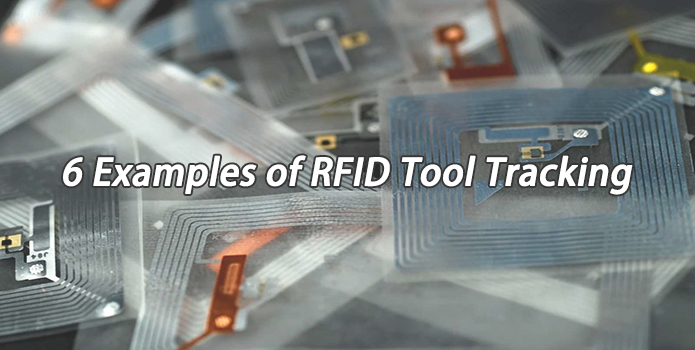RFID devices are becoming popular for tracking tools and other items that may be easily misplaced or otherwise difficult to monitor. The tracking uses hand-held readers that can scan multiple items without a direct line of sight. This article elucidates six examples of RFID tool tracking.
How RFID Tool Tracking Works
Many tool manufacturers are embedding RFID-метки into their tools. The tag contains a unique ID number or other details that can help in tools identification. A reader is then used to scan the tag and record the location of the tool.
Even better, some readers come with software that can alert the owner whenever the tag moves out of range. This adds a security layer since the tool owner can track a thief before they get out of the premises.
The read range of the tool RFID tracking system depends on several factors. One key determinant is the type of tags embedded in the tool. The tags may include:
- Tool Tracking with Passive Tags
Пассивные RFID-метки are powered by an external energy source, such as a reader device, but they do not have their internal power source. They draw power from an external source (reading device) since they have no battery. The passive tags communicate with the reader using inductive coupling (with a read range of up to 2 feet) or radiative coupling for those using high frequencies (with a read range of up to 20 feet).
- Tool Tracking with Active Tags
Active RFID tags have their source of power, usually a battery and an active transmitter. As such, they have a wider read range (350 feet to 750 feet) compared to passive tags. The battery-powered active tags are ideal for locating items that are deep within large areas because they can transmit information over greater distances. However, unlike passive tags, active tags cannot be read by most standard readers–they require special high-frequency readers called interrogators. Additionally, they are more expensive and release more radio noise than passive ones.
6 Примеров отслеживания инструментов с помощью RFID
- Tool Manufacturers Tool Tracking
Some companies, such as Stanley Black & Decker, use passive tags (battery-less tags). Other manufacturers like Proto use active tags (battery-powered tags) with their power source. Both types of technology work well for tracking tools within their respective industries.
Tool rental companies also benefit from passive or active RFID tags since the customer can locate tools after every job and return them to inventory without a hassle. This saves the clients’ time that would be spent searching through piles of similar-looking items.
- Busy Bus Station
This RFID bike shop system, developed by Polish company RIMAX, uses strategically placed antennas to read tags embedded in the wheels of bikes that pass through. A sensor tracks whether or not a bike is moving, and if it is determined to have been left unattended for too long, an alarm will sound. This helps to reduce congestion in busy bus stations as anyone who causes obstruction will be charged a fine.
- Hospital Parking Lot
This RFID system, developed by a Dutch company known as Smart Parking Systems, provides automatic identification and data capture capabilities to the parking market. It uses sensors and antennas to read and record information from tags attached to vehicles. This system can monitor how many times an individual has used a parking space, thus preventing the individual from using the same space multiple times. This reduces congestion in parking areas.
- RFID Tool Tracking on a Construction Site
This system eliminates the theft of expensive tools that occur on construction sites. Each tool is fitted with an inexpensive passive RFID tag. A fixed reader is stationed at the exit, and each time a tool is leaving with an individual, its unique serial number is recorded. Since only one unit can pass through the gate at any given time, this system ensures that nobody walks out of the site with more tools than they entered with.
- Concert Venues & Theaters
This RFID tagging system, developed by Finnish company IDEMIA OYJ, allows employees access to various areas of a concert venue using RFID cards. It can alert security personnel whenever unauthorized individuals gain access to the venue. Phantom Auto has also developed a similar system that tags tools as well as employees who use them. The use of this tool ensures that each tool can be tracked in real-time, thus barring thieves from taking them out of the authorized areas.
- Food Service & Warehousing
At many warehouses and food processing plants, items are tagged with RFID devices so that their locations can be tracked throughout the facility. By tracking items using RFID, companies can know exactly where various items are located, ideally resulting in reduced product loss and less time wasted searching for tools.
Other Industries Using RFID Tool Tracking
RFID tags are being widely used in the tool industry because they allow employees to locate tools, track inventory, and reduce loss. They can also protect against theft.
- Hospitals & Nursing Homes. In some hospitals, patients are tagged with RFID devices so staff can locate them in case of an emergency. The use of RFID tags can also help to ensure that patients do not leave the premises without receiving permission from staff, helping to improve security and reduce legal liability.
- General Industry. Active tags are also used to track large, valuable equipment such as conveyors, pumps, blowers, mixers, and turbines. Additionally, the technology is used in manufacturing facilities to locate items within large warehouses or other facilities like hospitals or airports. Since the battery-powered active tags will continue broadcasting information after they have been separated from their reader devices, they are ideal for applications requiring durability.
- Ocean Shipping. The global shipping industry has also adopted RFID tagging for its ships, containers, and trailers. They use passive tags that are only detected by unique readers. With this technology, shippers can monitor a container’s location and contents anywhere in the world without human intervention. It also improves security by providing an electronic identification number for each container that cannot be easily forged or removed.


